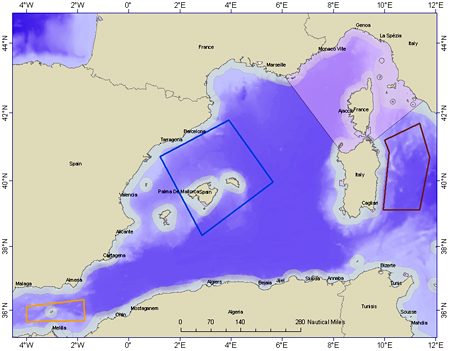Blogs & Expeditions
2019
Beaufort Gyre Expedition: A climate out of balance...
September 12-October 5, 2019
Recent observations suggest that because of global warming, the natural rhythms of the Beaufort Gyre have been tipped out of balance. To find out what this means for the future of the Arctic climate, scientists from the United States, Canada, and Japan have set out every summer since 2003 for month-long expeditions aboard the Canadian icebreaker Louis S. St-Laurent. They sample water properties during the cruises as well as deploy arrays of instruments to make sustained observations of the environment above, below, and within the floating icepack.
HACON: Hot Vents in an Ice-covered Ocean
September 19-October 16, 2019
A team of WHOI scientists and engineers takes the hybrid remotely operated vehicle Nereid Under-Ice 200 miles north of Greenland to attempt the first-ever exploration of hydrothermal vents in the Arctic.
The Life and History of Stellwagen Bank National Marine Sanctuary
This summer, WHOI is teaming up with NOAA's Office of National Marine Sanctuaries and Marine Imaging Technologies on a three-year project to explore the undersea life and maritime heritage of Stellwagen Bank National Marine Sanctuary. Live ship-to-shore broadcasts will be available on this site September 17-19, 2019.
Dive and Discover
Stories, photos, and videos take you on board research expeditions that explore some of the most remote and unknown reaches of the ocean and the organisms that live there.
2018
Beaufort Gyre Exploration Project 2018
The 16th year of an intensive study looking at the ice, ocean, and atmosphere of the Beaufort Sea in the Arctic.
Popping Rocks 2018
May 11 - June 11
Alvin and Sentry explore the geologic processes that helped form our planet's atmosphere and ocean and that continue to drive change on the face of Earth.
Return to the Phoenix Islands
WHOI’s Cohen Lab teams up once again with Pangaea Exploration, this time returning to the remote Phoenix Islands Marine Protected Area.
2017
Dark Life 2
April 24 – May 14
Follow a team of scientists, technicians, and engineers as they use the deep-sea submersible Alvin to obtain new insights into the functioning of deep-sea hydrothermal vent ecosystems.
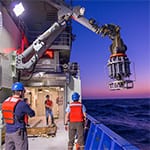
Processes Driving Exchange at Cape Hatteras (PEACH)
PEACH is focused on identifying the processes that control the exchange of waters between the continental shelf along the eastern seaboard of the U.S. and the open ocean.
2016
Oases for Life Beneath Ice-covered Oceans
HROV Nereid Under Ice hunts for hydrothermal vents beneath the ice-covered Arctic Ocean.
Hydrothermal Dynamics of Yellowstone Lake
Seeking to understand how earthquakes, volcanic processes, and climate affect the hydrothermal system located beneath Yellowstone Lake.
An Oceanographer's Guide
Adventures of a blind oceanographer and her seeing eye dog.
R/V Neil Armstrong: From the fantail
From space to sea: WHOI's newest research vessel continues the legacy of exploration.
Popping Rocks 2016
Alvin, Sentry, and Towcam explore the geologic processes that helped form our planet's atmosphere and ocean and that continue to drive change on the face of Earth.
GoShip 2016
Western Australia down to the Antarctic and back again.
2015
PIPA 2015
September 4 - 30, 2015
Return to the Phoenix Islands Protected Area in the remote Equatorial Pacific.
Mapping, Exploration, and Sampling at Havre
March 27 - April 17, 2015
An international team of scientists, technicians, and engineers use ROV Jason and AUV Sentry to investigate the largest recorded explosive submarine eruption in history.
British Indian Ocean Territory (BIOT)
March 2015
WHOI scientists Konrad Hugens and Colleen Hansel join an international team on board the Khaled bin Sultan Living Oceans Foundation's R/V Golden Shadow to collect coral samples from one of the largest and most remote marine reserves on the planet.
Jurassic Magnetism
Until January 17, 2015
The autonomous underwater vehicle Sentry explores the seafloor of the West Pacific and the history of Earth's geomagnetic field.
Palau Coral 2015
January 2015
An expedition to study environmental conditions on some of the most remote coral reefs in the Pacific
2014
Dark Life
November 2-16, 2014
Follow a team of scientists, technicians, and engineers from 11 different research institutions as they use the deep-sea submersible Alvin to obtain new insights into the functioning of deep-sea hydrothermal vent ecosystems.
Beaufort Gyre 2014
September - October 2014
Part of a long-term collaboration between researchers at WHOI and Fisheries and Oceans Canada at the Institute of Ocean Sciences to study the Beaufort Gyre in the western Arctic Ocean.
Return to Antikythera
September - October 2014
An international team applies the latest in oceanographic technology to exploring one of the richest and most famous shipwrecks in the Mediterranean.
TREET
Live from the seafloor September 18 - October 8
Transforming Remotely-conducted Research through Ethnography, Education & Rapidly Evolving Technologies
Palau Corals 2014
August 2014
An expedition to study environmental conditions on some of the most remote coral reefs in the Pacific
OSNAP Cruise Log
July 4 - 30, 2014
WHOI physical oceanographer Amy Bower leads the first U.S. cruise to deply instruments as part of OSNAP (Overturning in the Subpolar North Atlantic Program).
Expedition to Dongsha Atoll
May 22 - June 26
Venture to a remote coral atoll in the South China Sea to study the interaction betweeen the reef ecosystem and the world's largest "internal waves."
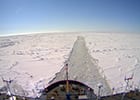
Arctic Spring
May 2014
Explore life on and under the sea ice in a unique, multi-disciplinary expedition to the top of the world.
Kermadec Trench Expedition 2014
April 10 to May 20, 2014
Follow a team of scientists and engineers from seven different research institutions who will use HROV Nereus, a deep-diving remotely operated vehicle, to explore part of the Kermedec Trench, one of the deepest in world.
Alvin Science Verification Cruise
March 14 - 26, 2014
After a three-year upgrade, the submersible Alvin returns to service as a significantly improved, much enhanced scientific instrument. A series of dives in the Gulf of Mexico tested the capabilities of its science and other systems.
2013
Caribbean Corals 2013
December 2013
Investigating the health and future of corals in a changing ocean.

Communicating under a cold sun
October 5, 2013 - February 8, 2014
Over five months in Antarctica, MIT/WHOI Joint Program student examines the chemical compounds algae use to "communicate" stress in a rapidly-changing ecosystem."
Beaufort Gyre 2013
August 2-September 4, 2013
Part of an ongoing study of the Beaufort Gyre and its importance to the Arctic Ocean ecosystem.
Pilot Whales in the Strait
August 2013
A month-long study of pilot whales in the Strait of Gibraltar, their behavior, and the impacts of human-generated noise.

Mytilus Seamount and Northeast Canyons
July 15-25 and August 1-15, 2013
A team of scientists and technicians at sea and on shore will explore the diversity and distribution of deep-sea habitats off the Northeast Coast of the U.S.
Sensory Ecology 2013
August 1-8, 2013
Part of an ongoing series of research expeditions to investigate how animals examine their underwater world
Oases 2013
May 30 - June 30, 2013
Hydrothermal exploration of the Mid-Cayman Rise and the world's deepest active vent fields.
Video archive

Getting Back to the Gulf
June 2013
Christoph Aeppli, Ben Freiberg, and Bryan James return to the Gulf of Mexico looking for samples of oil from the 2010 Deepwater Horizon spill.
DeepDOM
Over the course of nearly 5,000 miles, a team on R/V Knorr will take an integrated look at the chemistry and biology of the western Atlantic Ocean.
Sperm Whales of New Zealand
Scientists from WHOI and around the world get up-close with sperm whales off the coast of New Zealand to better understand and preserve these iconic marine mammals.
INC5 Science & Policy
Three MIT/WHOI Joint Program students attend the International Negotiating Committee on Mercury’s 5th and final meeting in Geneva, Switzerland January 13 to 19.
2012
Micronesia 2012
October-November 2012
Studying coral in the Pacific and its response to climate now and in the past.
Sensory Ecology 2012
August 9 to 25, 2012
Research expeditions to investigate how animals examine their underwater world
Charismatic Microfauna
August 8 to September 2, 2012
The Fun-with-krill team moves to the Pacific for a 25-day cruise studying tiny marine animals and the things that eat them.
To Greenland's Frozen Coast
July-August 2012
A team from Iceland, Norway, Germany, the Netherlands, and the United States on a 30-day expedition along the East Greenland Coast to the High-Arctic island of Spitsbergen.
INSPIRE: Chile Margin 2012
April 20 to 30, 2012
A continuation of a multi-disciplinary study begun two years ago to probe for new life forms dependent on as-yet-unknown conditions.
Qaanaaq 2012
March 23 to March 30, 2012
Dog sled meets sea ice meets robotic aerial systems
Cure for Cymophobia
February 20 to March 24, 2012
MIT/WHOI Joint Program student Sarah Rosengard makes her first research cruise, one through the Southern Ocean from South Africa to Australia studying the Great Coccolithophore Belt.
OASES 2012: Return to the Cayman Rise
January 6 to 27, 2012
Chris German leads an expedition with Jason to study the biology, geology, and chemistry of some of the deepest hydrothermal vents on Earth.
2011
The Arctic Winter Cruise
November 7 to December 20, 2011
Carin Ashjian leads the first winter voyage to the Chukchi and Bering Seas to study life under the ice.
Dive and Discover Expedition 14
November 28, to December 9, 2011
Exploring life in Mediterranean deep brines.
Sensory Ecology
October 20 - November 16, 2011
Examing the bioacoustic behavior of Hawaii's false killer and melon headed whales.
Terre Adelie, Antarctica 2011
October 12 2011 - January 2012
Stephanie Jenouvier studies emperor penguins and continuies a long-term survey of other seabirds.
To the Denmark Strait
August 23 - September 24, 2011
Researchers hunt for the origins of a mysterious current in the North Atlantic
Following the Ice: One hundred days on the Greenland Ice Sheet
April 28 - August 6, 2011
Dynamite: Dynamics of Abyssal Mixing and Interior Transports Experiment
May to June, 2011
Follow researchers as the study deep mixing and circulation in the North Atlantic ocean.
Fukushima Radiation in the Pacific
June 3 - 17, 2011
Follow scientists on board the R/V Ka`imikai-o-Kanaloa examine many of the physical, chemical, and biological characteristics of the ocean that either determine the fate of radioactivity in the water or that are potentially affected by radiation in the marine environment.
Studying the Ocean from the Bottom Up
Ongoing
Lloyd Keigwin describes the process of science—from initial question, to sample collection and data analysis, to published results—as he studies Earth's past climate.
2010
The Krill Blog
September to November, 2010
Krill are a vital part of the marine food chain. Follow a group of scientists in the Northwest Atlantic as they study krill and the animals that rely on krill to survive.
Taking the Pulse of the Fraser
September 12 - 29, 2010
This project aims to quantify the flux, age, and composition of terrestrial organic carbon transported by large rivers to the ocean.
The Daily Bucket Online
September 3, 2010
Follow Steve Beaupre’s reports from the R/V Atlantis as part of Tim Eglinton’s cruise examining how carbon cycles through the Northwest Atlantic.
Vanishing Arctic
August 28, 2010
Dallas Murphy reports back from Bob Pickart’s expedition aboard the U.S. Coast Guard icebreaker Healy to study the effects of warming and climate change in the Arctic.
Vent Larvae Cruises
August 20, 2010
Stace Beaulieu blogs from an expedition to the Southern Mariana Trench aboard the Japanese research vessel Yokosuka to study larvae at hydrothermal vents.
A Girl's Guide to Climate Change
August 4 -15, 2010
For a non-science perspective on paleoclimate research, follow Jaime Cat Callan's blog from the R/V Knorr in the Gulf of Maine.
Studying Climate Change from Beneath the Ocean
July 10 to August 1, 2010
Join WHOI researchers on the R/V Knorr as they travel to specific spots in the North Atlantic Ocean to pull sediments up from the ocean floor.
R/V Kilo Moana Quorum Sensing Cruise
July 13 - 23, 2010
Join WHOI researchers on the R/V Kilo Moana as they conduct a research cruise in the North Pacific to study bacteria involved in the marine carbon cycle.
Expedition to the Northern Galápagos Islands
May 14 to June 20, 2010
Join WHOI researchers on the R/V Melville as they travel to the Galápagos for a month of sea-floor mapping and rock sample collection.
Demerara Rise 2010
January to February, 2010
Join researchers on the R/V Knorr surveying and collecting sediment in the western tropical Atlantic, off the northeast coast of South America. The goal of the cruise is to collect sediment to learn ocean circulation has changed in the past, especially in association with the last ice age and abrupt climate events.
2009
Looking for Climate Change in the South Pacific
November 6, 2009 to February 1, 2010
The focus of our research is to look for changes in water properties that have taken place since the previous occupations of the 32°S line, and to attempt to link such changes to others seen in the Earth’s climate such as increases in greenhouse gases and global warming.
Oases for Life on the Mid-Cayman Rise
October 7 to November 6, 2009
Join a renowned team of oceanographers and astrobiologists as they explore one of the deepest points in the Caribbean Sea, searching for life in extreme seafloor environments.
Expedition to the Phoenix Islands Protected Area
September 2009
Follow an international team of scientists, divers, photographers and officials working in the Phoenix Islands, a remote archipelago of coral islands in the equatorial Pacific, on a 3-week research mission to survey what may be the most pristine, intact coral reef ecosystems on Earth, in the Phoenix Islands Protected Area (PIPA).
MED 09: Tracking Noise, and Whales, in the Western Mediterranean
July 27 to September 9, 2009
During MED 09 (short for Mediterranean 2009), researchers on board the research vessel will be updating a blog about their ongoing activities and research as they work to understand the effects of sound on beaked whales and other marine mammals. Researchers want to understand how whales change their behavior when they hear different sounds, both natural and man-made.
Summer Student Fellow Blog
Summer 2009
Undergraduate students spend a summer getting hands-on oceanographic research experience and working with world-class scientists and engineers in WHOI's Summer Student Fellowship program. Follow a blog by fellow Ellie Bors as she writes about her experiences working with biologist Tim Shank.
2001-2008
Irminger Sea
information about the water and atmosphere to learn how storms influence the sea.
Polar Discovery
Polar Discovery brings you the stories of science on ice. The polar regions are experiencing unprecedented environmental changes that are having significant impacts on global climate, ecosystems, and society. Using the latest engineering advancements, scientists are studying the changing climate at the heart of the icy Arctic Ocean, the melting glaciers of Greenland, and the creatures of Antarctica's Southern Ocean.
Dive and Discover
Dive and Discover immerses you in the excitement of ocean exploration. Through daily stories, photos, and videos, our Web site brings you on board research expeditions that use deep-sea tools and vehicles, allowing you to become part of teams of researchers making new discoveries.
Beaufort Gyre Exploration Project
A series of nine expeditions from 2003 to 2011. The purpose is to study fresh water accumulation and release mechanism and the role of fresh water in Arctic climate variability.
Ocean InSight: Irminger Rings in the Labrador Sea
September 19 to 28, 2007
Join oceanographer Amy Bower as she travels on the R/V Knorr to the Labrador Sea to install a deep water mooring and technology to observe currents. She will be posting interactive updates on the OceanInsight website, which has special enhancements for the visually impaired.
2007 Arctic Seafloor Exploration
July 1 to August, 2007
Explorers to use new robotic vehicles to hunt for life and hydrothermal vents on Arctic seafloor.

CORSACS: Controls on Ross Sea Algal Community Structure
November 1 to December 16, 2006
A team of scientists from universities and research institutions from around the world explored the ecosystem of the Ross Sea near the continent of Antarctica.

Antarctica Invertebrates
May to June 2006
Dispatches from Antarctica.
Cruising Where Currents Collide
August 2004 and February 2005
At Cape Hatteras offshore North Carolina, scientists are learning about the turbulent meeting of two powerful Atlantic currents. See photos and read about their research.
Chasing Down Ocean Particles
June 21 to July 10, 2004
Join WHOI scientists off the coast of Hawaii as they explore where marine particles come from and much more.

Plankton, Worms and Jellies
November to December 2004
Two teams of scientists share the R/V Laurence M. Gould in the Antarctic "springtime", Thanksgiving to Christmas. Ocean sampling will look at bottom-dwelling worms, free-floating plankton, and their companion salps (a type of jellyfish). Read the daily journals and questions from curious students following the cruise.
Edge of the Arctic Shelf
A series of three expeditions from 2002 to 2004, the Edge of the Arctic shelf covers cruises that represent the physical oceanographic component of the Western Arctic Shelf Basin Interactions (SBI) Experiment. The overall goal is to understand how the Arctic shelves communicate with the interior basin from a coupled physical--biogeochemical standpoint.
Postcards from the Bottom of the Earth
November to December, 2001
Read WHOI Senior Scientist and geochemist Ken Buesseler's letters to family as he took part in a research cruise on the RSV Aurora Australis in and out of Hobart Australia heading due south to the Southern Ocean and Antarctica.
Virtual Stowaway on an Oceanographic Research Cruise
Immerse yourself in QuickTime panoramas of shipboard activities on a 'jelly animal cruise' in the North Atlantic. We invite you to explore this site and offer ideas for future enhancements
Other Expeditions Highlighting WHOI Research
Jurassic Ocean Crust Magnetic Survey 2011 Expedition in the South Pacific
R/V Thomas G. Thompson
November 5 - December 17, 2011
14 scientists, 14 engineers, and 21 crew will sail to the Western Pacific Ocean near 20°N, 160°E to measure the magnetism, bathymetry, gravity, and structure of the Jurassic seafloor to investigate the history of the Earth's geomagnetic field. Maurice Tivey of the Geology and Geophysics Department is co-chief scientist on this cruise.
Sea of Cortez Expedition
New England Aquarium
September 13 to September 17, 2008
This expedition took researchers to the El Bajo Seamount in the Sea of Cortez where they used a submarine to explore deep water diversity

Energy & The Ocean Environment
SEA SSV Corwith Cramer
May 14 - June 16, 2011
Listen to Rich Camilli describe his work aboard the Corwith Cramer during the Sea Education Association's (SEA) Sea Semester.
Lophelia II 2010: Oil Seeps and Deep Reefs
NOAA's Ocean Explorer
October 14 – November 4, 2010
This is the fourth cruise in a four-year project to discover and characterize deep-water coral communities in the Gulf of Mexico, to conduct a variety of experiments and analyses that will help us to predict where other communities will be found, and to understand why we find them where we do.
Chile Margin Expedition: INSPIRE
NOAA's Ocean Explorer
February 24 - March 17, 2010
A diverse team of scientists will be tackling questions about strange new biological life forms, communities, and ecosystems far from the sunlit surface at the Chilean Triple Junction.

RRS James Cook Black Soker Expedition to the East Scotia Ridge
National Oceanography Centre
January 7 - February 21, 2010
This expedition will explore areas of the deep seabed of the Southern Ocean to locate and investigate hot water vents (hydrothermal vents) and cold seeps.
Insite 08: OOI Mapping Cruise
University of Washington
July 22 - July 31, 2008
The primary purpose of the cruise is to create seafloor maps of two areas on the Juan de Fuca tectonic plate that are within the National Science Foundation’s Ocean Observatories Initiative.
2007: Exploring the Inner Space of the Celebes Sea
NOAA's Ocean Explorer
September 27 - October 16, 2007
This expedition takes you to unexplored waters south of the Philippine Islands, in search of the strange, and possibly unknown, fishes, jellyfish, squids and shrimp that live in the dark deep waters of the Celebes Sea.
New Zealand American Submarine Ring of Fire 2007 - NZASRoF'07
NOAA's Ocean Explorer
July 28 - August 16, 2007
The New Zealand American Submarine Ring of Fire 2007 expedition explored Brothers submarine volcano, a site of vigorous geothermal activity north of New Zealand along the Kermadec Arc. This expedition marked the most comprehensive exploration of this type of submarine volcano to date.
Project PHAEDRA 2006
NOAA's Ocean Explorer
June 25 - July 4, 2006
A Woods Hole Oceanographic Institution and Hellenic Center for Marine
Research led team of engineers, geologists, geochemists, archaeologists, and historians embarked on the Greek research vessel Aegaeo to explore deep sites within Greek national waters.
North Atlantic Stepping Stones 2005
NOAA's Ocean Explorer
August 7- September 3, 2005
An expedition that biologically sampled the New England seamount and Corner Rise seamount chain.
The Lost City 2005
NOAA's Ocean Explorer
July 17 - August 4, 2005
This expedition will explore the Lost City Hydrothermal Field (LCHF) 24-hours a day for 10 days using IFE's Remotely Operated Vehicles (ROV's) Argus and Hercules and immediately transmitting that data to scientists on-shore.
Exploring Alaska's Seamounts
NOAA's Ocean Explorer
July 30 - August 23, 2004
The 2004 Gulf of Alaska Seamount Expedition used the deep submergence vehicle (DSV) Alvin to explore five large seamounts.
Russian-American Long-term Census of the Arctic (RUSALCA) 2004
NOAA's Ocean Explorer
July 23 - August 24, 2004
This initial cruise is a collaborative U.S.-Russian Federation oceanographic expedition to the Arctic seas regions shared by both countries: the Bering and Chukchi seas.
Mountains in the Sea
NOAA's Ocean Explorer
July 11 - July 19, 2003
With the help of the Alvin submersible, a multidisciplinary team of scientists and educators visited several little known seamounts in the North Atlantic, along with at least one previously unexplored seamount, to study various aspects of deep-sea octocorals and other organisms living on and around the seamounts.
Hudson Canyon Expedition
NOAA's Ocean Explorer
August 27 - September 15, 2002
Hudson Canyon Expedition
2002 allowed investigators from four academic insitutions and two governmental agencies to map a significant portion of the slope and
rise to the east and west of the Hudson Canyon.
Submarine Ring of Fire 2002 - Explorer Ridge
NOAA's Ocean Explorer
June 28 - July 11, July 23 - August 5, 2002
An interdisciplinary exploration team of U.S. and Canadian scientists used new seafloor mapping systems, an autonomous vehicle, and a remotely operated vehicle to investigate the birth of new ocean crust off the coast of western North America.
Deep East Expedition
NOAA's Ocean Explorer
September 8 - October 1, 2001
The deep submergence vehicle Alvin, was used explore new resources and deep-sea frontiers off the U.S. East Coast

Voyage to the Deep
University of Delaware
January 13 - January 19, 2000
On this expedition, scientists descended 2.4 kilometers (1.5 miles) to the seafloor aboard the deep-sea sub Alvin to explore hydrothermal vents in the Sea of Cortés off the west coast of Mexico.

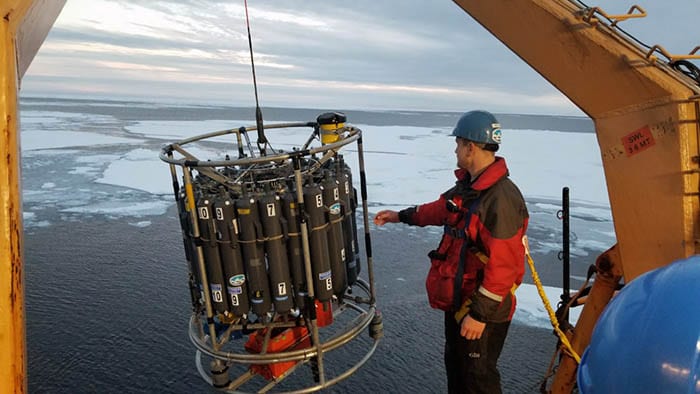
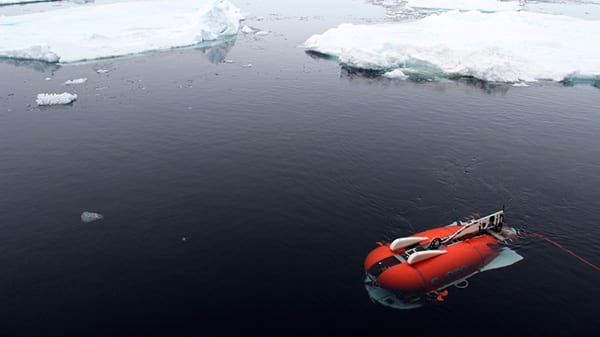
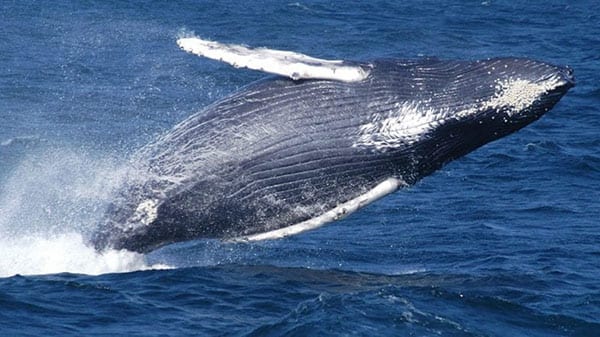
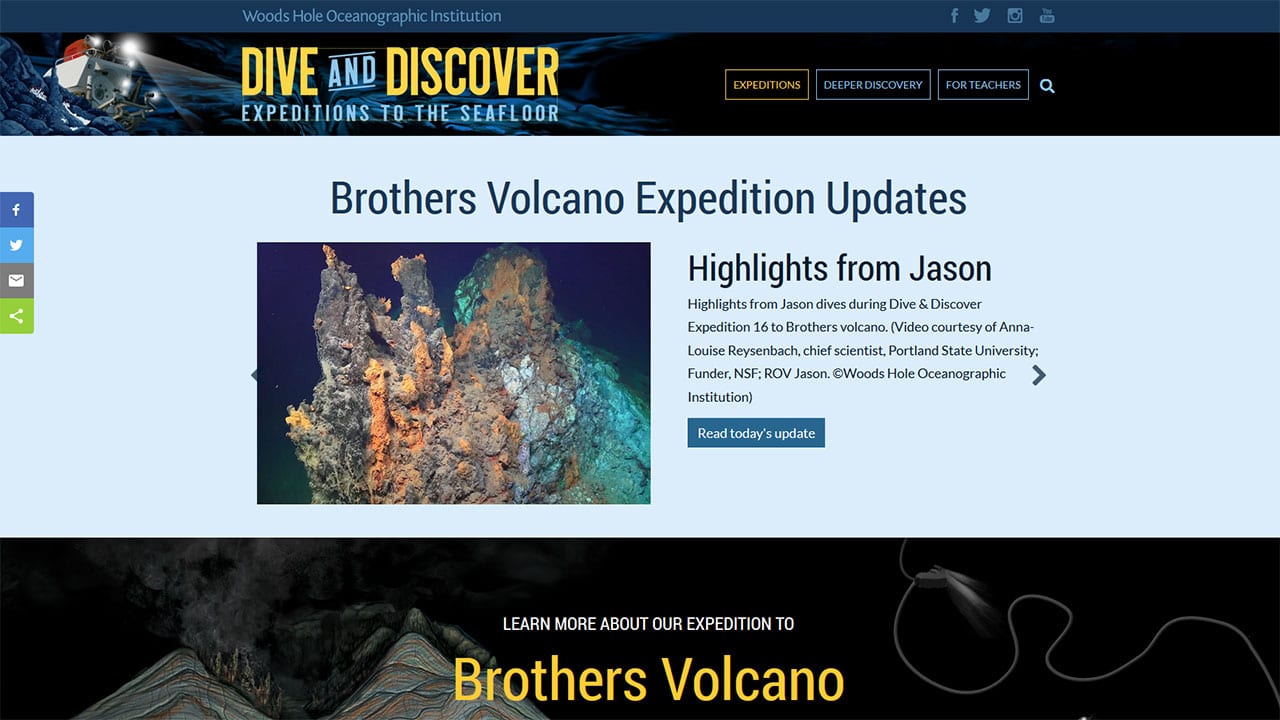
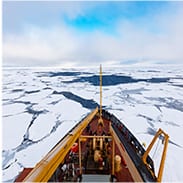
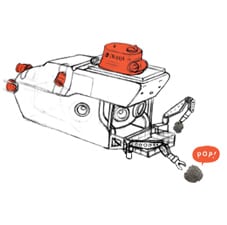
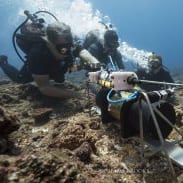
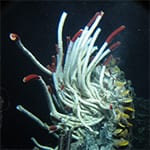
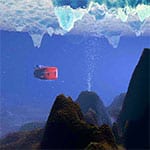
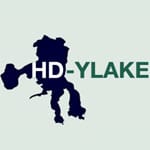
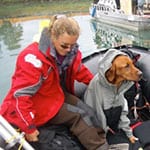
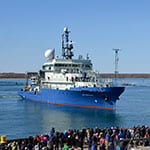
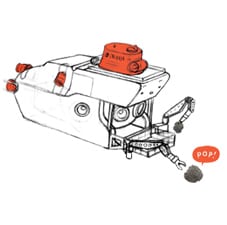
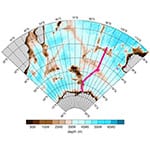
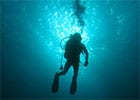
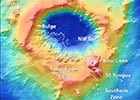
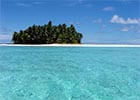
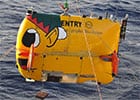
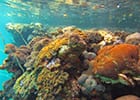
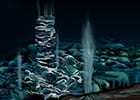
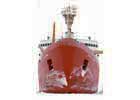
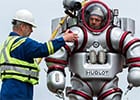

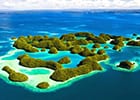
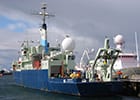
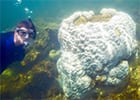
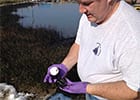
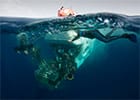






































![[Gallery Photo]](http://www.whoi.edu/cms/images/bathy_map_x_94235.jpg)
![[Gallery Photo]](http://www.whoi.edu/cms/images/capehatt_x1_94197.jpg)
![[Gallery Photo]](http://www.whoi.edu/cms/images/nereusBeauty_x_94238.jpg)
![[Gallery Photo]](http://www.whoi.edu/cms/images/ctd_x1_94195.jpg)
![[Gallery Photo]](http://www.whoi.edu/cms/images/Nasa-logo_x_94190.jpg)
![[Gallery Photo]](http://www.whoi.edu/cms/images/german_x_94011.jpg) Dr. Christopher R German
Dr. Christopher R German![[Gallery Photo]](http://www.whoi.edu/cms/images/huber_x_94202.jpg)
![[Gallery Photo]](http://www.whoi.edu/cms/images/bowen_x_94212.jpg)
![[Gallery Photo]](http://www.whoi.edu/cms/images/maxColman_x_94204.jpg)
![[Gallery Photo]](http://www.whoi.edu/cms/images/connelly_x_94010.jpg)
![[Gallery Photo]](http://www.whoi.edu/cms/images/forte_x_94210.jpg)
![[Gallery Photo]](http://www.whoi.edu/cms/images/gomez_x_94012.jpg)
![[Gallery Photo]](http://www.whoi.edu/cms/images/honig_x_94468.jpg)
![[Gallery Photo]](http://www.whoi.edu/cms/images/bio_jakuba_x_94308.jpg)
![[Gallery Photo]](http://www.whoi.edu/cms/images/mcdermott_x_94260.jpg)
![[Gallery Photo]](http://www.whoi.edu/cms/images/RIMG0454_x_94229.jpg)
![[Gallery Photo]](http://www.whoi.edu/cms/images/sands_x_94228.jpg)
![[Gallery Photo]](http://www.whoi.edu/cms/images/seewald_x_94013.jpg)
![[Gallery Photo]](http://www.whoi.edu/cms/images/julieSmith_x_94214.jpg)
![[Gallery Photo]](http://www.whoi.edu/cms/images/sylva_x_94209.jpg)
![[Gallery Photo]](http://www.whoi.edu/cms/images/taylor_x_94208.jpg)
![[Gallery Photo]](http://www.whoi.edu/cms/images/thomas_x_94203.jpg)
![[Gallery Photo]](http://www.whoi.edu/cms/images/VanD39b_x_94438.jpg)
![[Gallery Photo]](http://www.whoi.edu/cms/images/whitcomb_x_94205.jpg)
![[Gallery Photo]](http://www.whoi.edu/cms/images/yoeger_x1_94211.jpg)

![[Gallery Photo]](http://www.whoi.edu/cms/images/Rob-Barrel_93451.jpg)
![[Gallery Photo]](http://www.whoi.edu/cms/images/participantCraig-Cook_93511.jpg)
![[Gallery Photo]](http://www.whoi.edu/cms/images/participantAlan-Dynner_93513.jpg)
![[Gallery Photo]](http://www.whoi.edu/cms/images/particpantLes-Kaufman_93508.jpg)
![[Gallery Photo]](http://www.whoi.edu/cms/images/participantsLarry-Madin_93448.jpg)
![[Gallery Photo]](http://www.whoi.edu/cms/images/participantDavid-Obura_93512.jpg)
![[Gallery Photo]](http://www.whoi.edu/cms/images/participantsRandi-Rotjan_93449.jpg)
![[Gallery Photo]](http://www.whoi.edu/cms/images/participantsStuart-Sandin_93452.jpg)
![[Gallery Photo]](http://www.whoi.edu/cms/images/participantsBrian-Skerry_93450.jpg)
![[Gallery Photo]](http://www.whoi.edu/cms/images/participantJim-Stringer_93509.jpg)
![[Gallery Photo]](http://www.whoi.edu/cms/images/participantGreg-Stone_93514.jpg)
![[Gallery Photo]](http://www.whoi.edu/cms/images/participantsTukabu-Teroroko_93454.jpg)
![[Gallery Photo]](http://www.whoi.edu/cms/images/participantsJeff-Wildemuth_93453.jpg)

